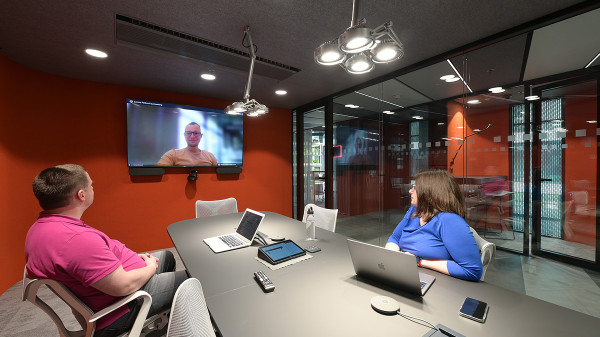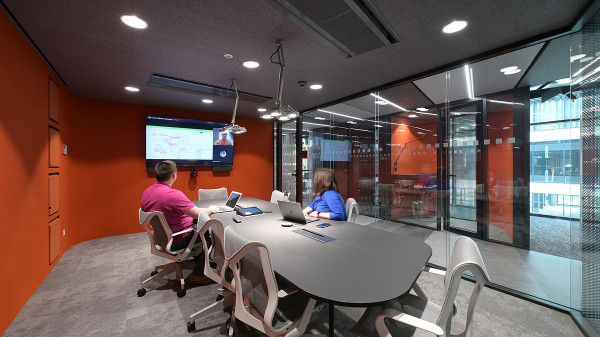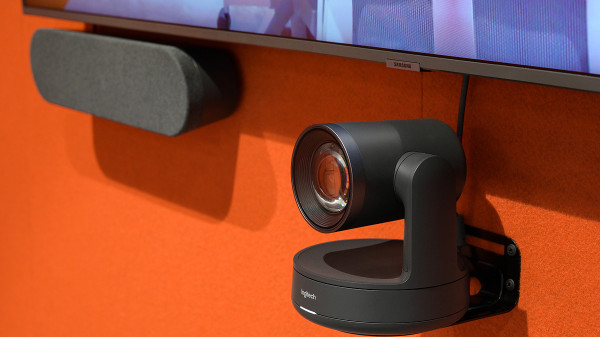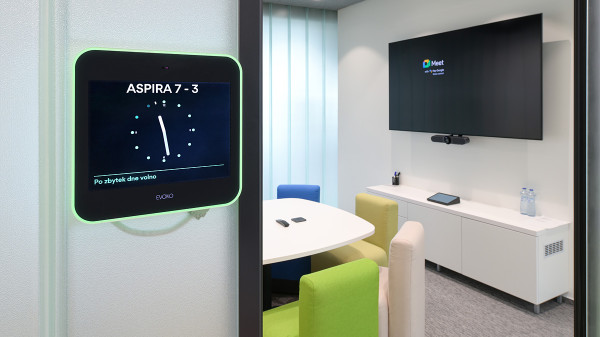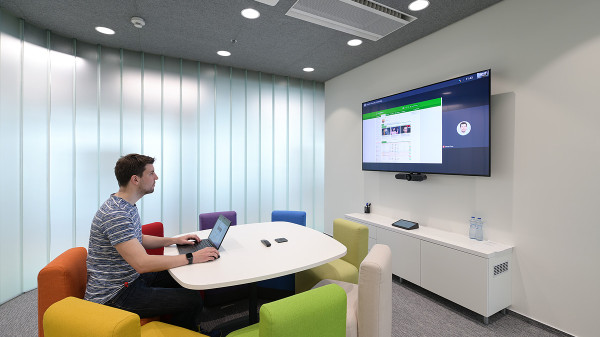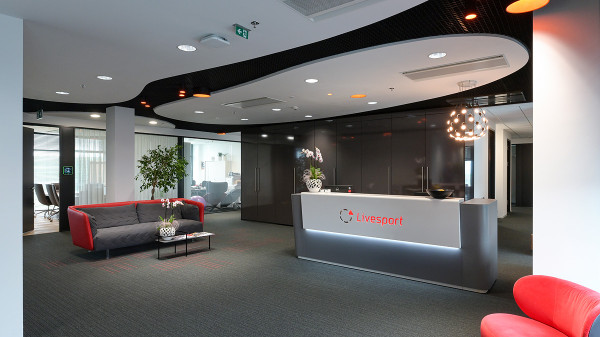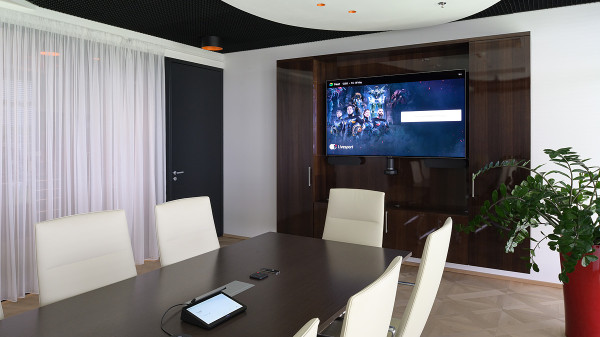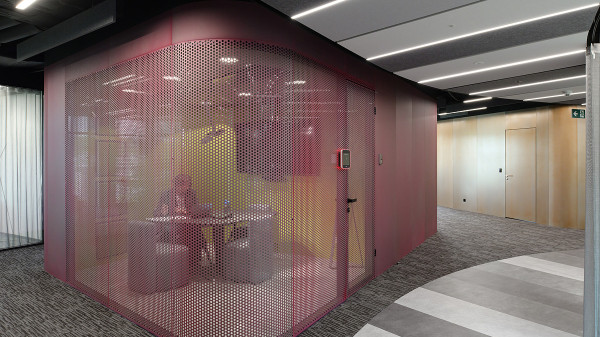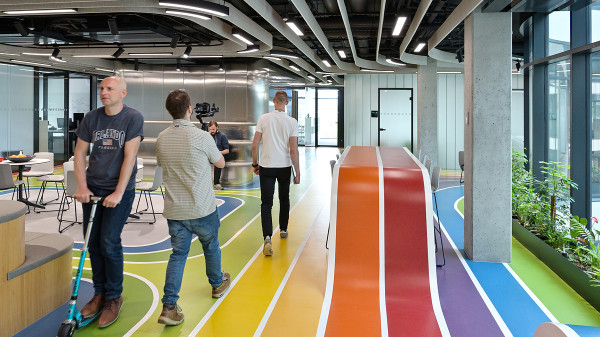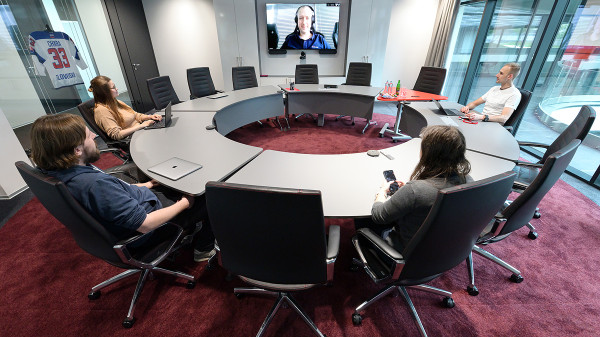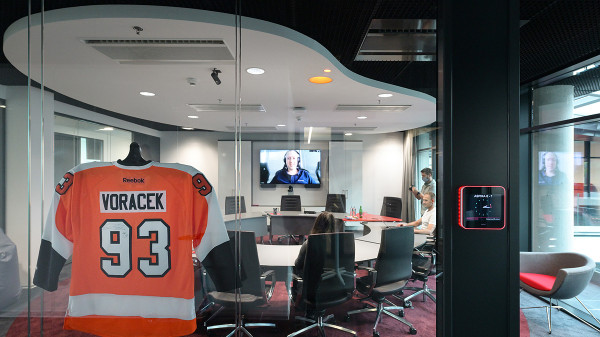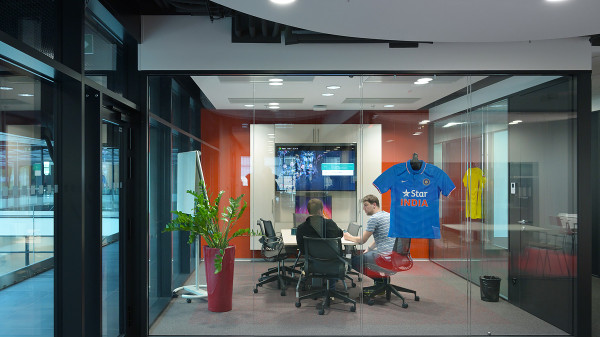
If you hope to “win” with the back-to-office initiative, you will need to focus on the “three” strategies below. Failure to win in all three areas will almost certainly result in a “loss”.
Create a work environment that people will love to return to.
1. The purpose of the workplace has changed.
The primary role of the workplace is not to perform tasks, but to enable people to meet and collaborate. The space allocated to the individual (a desk with a computer) is on the decline, while the space for meeting and collaboration will play a key role and its importance and use will significantly increase in the ’workplace as a meeting place’.
The winning strategy for returning to the office is to fully embrace the re-purposing of the workplace. We recognize that for the foreseeable future (probably the next three to five years), the workplace priority will be ’hybrid’ collaboration and meetings, not task completion.
Meeting rooms, both formal and informal, have a new value for the organization. This applies, among other things, to desks intended for individual work, which we will share with other colleagues. Organizations that embrace change and at the same time explain it correctly to people will ’win’. Organizations that do not understand change will not retain people, because their people will feel dissatisfied and lose the sense of work.
2. Recognizing the new dynamic of hybrid meetings.
Most meetings will be ’hybrid’. If you hope to succeed in your efforts to return to offices, you must be open to innovation and adapt to the new reality. What does that mean?
Before the pandemic, we travelled to important meetings. We felt the need to be physically in the room to voice our opinion and influence important decisions. Today, the centre of influence in meetings has shifted to virtual environments, during which remote participants can see and hear each other and communicate accordingly. When designing meeting rooms, focus on the overall experience for those in the room as well as those who are far away. Rooms need to be equipped with such technologies that employees feel they have an equal role and degree of involvement in any meeting they attend.
3. Stay flexible with the expectation of returning to the office.
We know many knowledge workers (and others) cannot wait to get back to the office, but there are some who are not very keen on returning. Your job is to send a clear message that returning to the workplace makes sense. People returning to the office space, even part-time, have a positive impact on innovation, problem solving and workforce retention. The only way to ’win’ is to lead and explain to people the benefits of returning to the workplace, not to tell them to do it.
Communicate and emphasize the importance of personal collaboration. Make sure workplace technology is ready to meet new needs and wants just like working from home. If you encourage collaboration, people will decide to return themselves.
Remember that there are differences between baby boomers, Millennials and Gen Z workers when it comes to returning to the office. Most baby boomers believe that individual work is most important. In contrast, the younger generation feels that community cooperation in a team is crucial for their further development. Millions of square meters of office space must be transformed to accommodate focused thinking, creative team collaboration and active engagement of remote participants.
Try to re-design spaces into places for team meetings, creative collaboration and deep individual thinking. Back in the office you ’win’ when you lead people with passion and purpose.

















